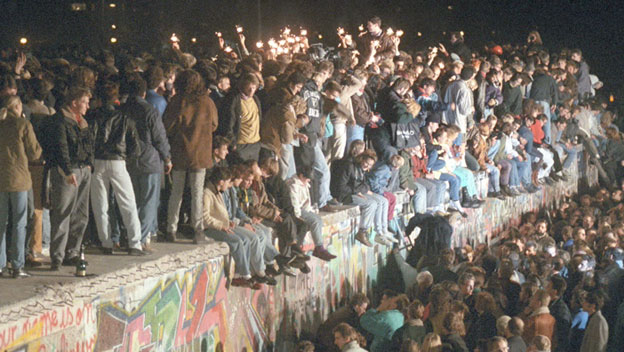The Berlin Wall served as a barrier that divided the capital up until its fall in 1989. The wall was erected by the German Democratic Republic in East Germany on the 13th of August 1961. Because of the wall, West Berlin was totally cut off by land from East Germany, and also East Berlin. The complete demolition of the wall officially started on June 13 of 1990 and was fully accomplished in 1992.
Many people will remember that President Ronald Reagan infamously called for the wall to be torn down. It was perhaps one of the most memorable speeches of his presidency, and many argued that it was the tipping point towards the acceleration of the wall ultimately coming down just a few years later.
The Berlin Wall
The barrier had guard towers found along big concrete walls. These surrounded a large area known as the “death strip”. In the death strip were “fakir beds”, anti-vehicle trenches, and items for defense. It was claimed by the Eastern Bloc that the wall was constructed to protect citizens from the fascists, to help avoid creating a socialist state in East Germany. In reality, the Berlin Wall was successful in preventing the exodus and defection in the East. It was also able to prevent communism in the Eastern Bloc.
In 1989, a chain of radical changes in politics happened in the Eastern Bloc, which were linked with the release of the Eastern Bloc’s authoritarian systems liberalization and the demolition of certain political power found in Poland and Hungary.
Several weeks of civil unrest in East Germany led to the East German government’s proclamation that all citizens of GDR would be allowed to visit West Berlin and West Germany. Hungary then announced it would disable the nation’s physical border next to Austria. This was announced on August 19, 1989.
A month later, in September, over 10,000 tourists from East Germany were able to escape via Hungary to Austria. The Hungarians reacted to this by preventing additional East Germans from going over the border and sending them instead to Budapest. Afterwards, citizens of East Germany went to the embassy of West Germany while refusing to go back to their home.
The Fall Of The Berlin Wall
After the announcement was made in November 9, 1989 scores of Germans from the East climbed the wall. The West Germans met them on the other side of the wall, leading to a joint celebration.
After the broadcast, numerous East Germans gathered at the Berlin Wall. They then ordered the border guards to open the gates. The alarmed and frightened guards began calling their superiors to discuss the situation at hand. Initially, the border guards were commanded to locate the more difficult people in the crowd and to apply a special stamp on the passports of these citizens, thereby taking away their citizenship. This didn’t work because thousands of Germans demanded that they be allowed through.
Weeks later, many began chipping some portions of the Berlin wall. Eventually the government joined in, using industrial equipment to get rid of the barrier.
Contradicting commonly held knowledge, the Berlin Wall was actually destroyed in the summer of 1990. The demolition was not completed until a few years later, in 1992. Thanks to the fall of the Berlin Wall, there was finally reunification in Germany.

